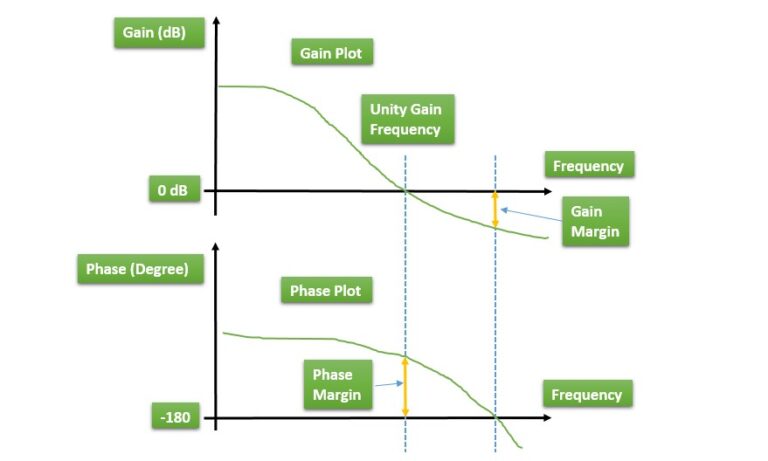Exploring Machine Learning (ML) can be rewarding for those keen on understanding how computers learn from data to make informed decisions. If you’re a beginner, looking for the basics of machine learning, you’re in the right place. Let’s explore the basics, simplify key concepts, and journey into the fascinating world of machine learning.
1. Understanding the Basics
1.1 What is Machine Learning?
At its core, Machine Learning is about teaching computers to recognize patterns in data and use that knowledge to make predictions or decisions. Imagine a friend learning to spot dogs in pictures. Initially, you might show them images of different dog breeds, and over time, they learn to identify dogs based on visual features.
1.2 Types of Machine Learning
Guided Learning:
Think of this as a teacher guiding a student. The model is trained on a labeled dataset, where it learns to map input data to the correct output. For example, given images of cats and dogs, the model learns to distinguish between the two.
Self-Discovery Learning:
In this scenario, the model explores the data without explicit guidance. It identifies patterns and relationships within the dataset. An example is grouping similar customer preferences without predefined categories.
Trial and Error Learning:
Similar to teaching a dog new tricks, trial and error learning involve training an agent to make decisions based on experiences. The agent receives rewards or penalties for its actions, learning to maximize rewards over time.
1.3 The Machine Learning Workflow
Data Collection:
Gather relevant data representing the problem you want to solve. For instance, for a spam email classifier, you’d need a dataset with labeled emails.
Data Preprocessing:
Clean and organize the data. This includes handling missing values, scaling features, and converting text or categorical data into a suitable format.
Model Training:
Choose a suitable algorithm and train the model using the labeled dataset. During training, the model adjusts its parameters to minimize errors.
Evaluation:
Assess the model’s performance on a separate dataset it has never seen before. This helps ensure the model generalizes well to new, unseen data.
Prediction:
Once satisfied with the model’s performance, deploy it to make predictions or decisions on new, real-world data.
2. Demystifying Key Concepts
2.1 Algorithms: The Building Blocks
At the heart of machine learning are algorithms—mathematical formulas that enable computers to learn from data. Each algorithm is like a unique recipe designed to solve specific types of problems.
Straightforward Prediction:
Imagine fitting a straight line through a scatter plot. This algorithm is used for predicting a continuous outcome, like guessing house prices based on features like size and location.
Decision Making:
Think of a flowchart that helps you decide what to wear based on weather conditions. This algorithm makes decisions by splitting data into subsets based on certain features.
Inspired Learning:
Inspired by the human brain, this algorithm consists of interconnected nodes that mimic neurons. Deep Learning, a subset of ML, utilizes this algorithm for complex tasks like image and speech recognition.
2.2 Features and Labels
Features:
These are the input variables that the model uses to make predictions. For a house price prediction model, features could include the number of bedrooms, location, and square footage.
Labels:
The output variable the model aims to predict. In the same house price prediction example, the label would be the actual sale price of the house.
2.3 Overfitting and Underfitting
Overfitting:
Imagine memorizing a textbook but struggling to answer exam questions. Overfitting occurs when a model learns the training data too well but fails to generalize to new, unseen data.
Underfitting:
This is like not studying enough for an exam. Underfitting happens when a model is too simple to capture the underlying patterns in the data.
2.4 Hyperparameters
Definition:
Parameters that are not learned from the data but set before the training process begins. They influence the model’s learning process.
Example:
In a decision-making algorithm, the maximum depth (how deep the algorithm can go) is a hyperparameter. Finding the right hyperparameters is crucial for optimal model performance.
3. Practical Tips for Learning Machine Learning
3.1 Understanding the Basics:
Conceptual Understanding:
Start with the basics of what ML is and how it works. Concepts like supervised learning, unsupervised learning, and reinforcement learning are foundational.
Mathematics Fundamentals:
Brush up on basic mathematics, particularly linear algebra and calculus. Khan Academy or similar platforms offer excellent resources for free.
Programming Basics:
Learn a programming language, preferably Python. It’s widely used in ML. Platforms like Codecademy or W3Schools can help you grasp the fundamentals.
3.2 Hands-On Learning:
Online Courses:
Enroll in beginner-friendly online courses. Platforms like Coursera, edX, and Udacity offer courses from universities and institutions. “Machine Learning” by Andrew Ng on Coursera is a great starting point.
Practical Projects:
Apply what you learn by working on small projects. Kaggle provides datasets and a supportive community. Start with simpler tasks and gradually increase complexity.
3.3 Deepen Your Knowledge:
Intermediate Courses:
Once you’re comfortable, delve into more advanced courses. “Deep Learning Specialization” by Andrew Ng on Coursera is fantastic for understanding neural networks.
Read Books:
Books like “Hands-On Machine Learning with Scikit-Learn, Keras, and TensorFlow” by Aurélien Géron offer practical insights.
3.4 Practice, Practice, Practice:
Kaggle Competitions:
Participate in Kaggle competitions. They provide real-world problems and datasets, helping you apply your skills in a competitive environment.
GitHub:
Explore ML projects on GitHub. Studying others’ code is a fantastic way to learn different approaches.
3.5 Advanced Topics:
Specialized Courses:
Consider specialized courses on topics like natural language processing (NLP), computer vision, or reinforcement learning based on your interests.
Read Research Papers:
As you progress, start reading research papers to stay updated with the latest advancements in ML.
3.6 Community Engagement:
Forums and Meetups:
Join forums like Stack Overflow, Reddit (r/MachineLearning), and attend local meetups or online communities. Learning from others and seeking help when needed is crucial.
Networking:
Connect with professionals in the field through LinkedIn. Attend conferences or webinars to expand your network.
3.7 Continuous Learning:
Newsletters and Blogs:
Subscribe to newsletters like the one from Towards Data Science and follow ML blogs. This keeps you informed about industry trends.
Online Conferences:
Attend virtual conferences or webinars. Many are free and offer insights from experts in the field.
Remember, the key is consistent practice and a curious mindset. Start small, build gradually, and enjoy the journey of mastering Machine Learning!
4. Steps for Creating a Small Machine Learning project
4.1 Choosing a Project:
Select a Topic:
Choose a subject you’re genuinely interested in. Whether it’s predicting movie ratings, identifying flower species, or something else, passion fuels motivation.
Define the Goal:
Clearly state what your model should achieve. If it’s predicting, specify what it needs to predict and how accurate it should be.
4.2 Data Preparation:
Get a Dataset:
Find a dataset relevant to your project. Websites like Kaggle, UCI Machine Learning Repository, and data.gov are goldmines.
Data Cleaning:
Eliminate duplicates, handle missing values, and ensure your data is in a format your model can understand.
Split the Data:
Divide your dataset into two parts: one for training the model and one for testing its accuracy.
4.3 Model Building:
Choose an Algorithm:
Depending on your project type, select an algorithm. Linear regression for predicting, decision trees for classification, etc.
Coding Time:
Implement your chosen algorithm using a programming language like Python. Libraries like Scikit-Learn or TensorFlow are incredibly handy.
Train Your Model:
Feed your algorithm with the training data. Let it adjust its parameters to learn from the patterns in the data.
4.4 Evaluation and Improvement:
Test Your Model:
Use the testing dataset to check how well your model predicts. Evaluate its accuracy and identify any areas for improvement.
Refinement:
Tweak your algorithm, adjust hyperparameters, or even consider trying a different model if needed.
4.5 Showcase Your Work:
Build a Simple UI:
Create a straightforward interface if applicable. It could be a basic webpage, a console application, or any way to interact with your model.
Share Your Project:
Publish your work on GitHub or any platform of your choice. Write a blog post or share it on social media to showcase what you’ve accomplished.
4.6 Learning and Next Steps:
Reflect and Learn:
Take time to understand what worked well and what didn’t. Learning from mistakes is a crucial part of the process.
Plan Your Next Project:
Based on your experience, think about your next project. Gradually increase the complexity as you become more comfortable.
Remember, hands-on experience is the best teacher. So, pick a project, get your hands dirty with code, and enjoy the learning journey!
5. Conclusion
Machine Learning might seem complex at first to beginners, but breaking down concepts and adopting a hands-on approach makes it more accessible. Remember, learning is a journey, not a sprint. Embrace curiosity, keep experimenting, and gradually you’ll unravel the intricacies of this fascinating field.
Frequently Asked Questions
Q1: Is machine learning for beginners or only for experts in programming?
No, beginners can start with user-friendly tools and gradually delve into programming as they gain confidence.
Q2: How do I choose the right algorithm for my project?
Consider the nature of your data and the type of problem you’re solving. Start with simpler algorithms for basic tasks.
Q3: Can machine learning be applied to non-technical fields?
Absolutely! ML has applications in various domains, from healthcare to marketing.
Q4: Is it necessary to have a strong mathematical background for machine learning?
While a mathematical understanding helps, there are user-friendly ML tools that don’t require an in-depth math background.
Q5: What’s the difference between machine learning and artificial intelligence?
Machine learning is a subset of artificial intelligence focused on training models, while AI encompasses a broader range of intelligent tasks.
Q6: What’s the difference between machine learning and deep leaning?
Machine Learning (ML) is a broader concept involving methods for computers to learn from data and make predictions. Deep Learning (DL) is a subset of ML, specifically focused on deep neural networks. While all deep learning is machine learning, not all machine learning involves deep learning.







